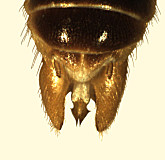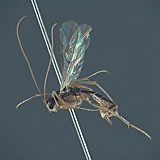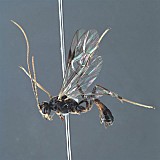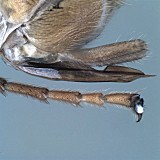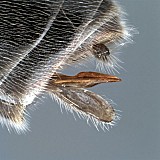Prionopoda Holmgren, 1857:120. Unjustified emendation (Townes et al. 1965).
The name Prionopoda was in general use for about 100 years following Holmgren, 1857. Ichneumon sticticus Fabricius, 1798 was designated as the type species of Prionopoda by Viereck, 1914, who noted that Holmgren (1856) had included two species in his original description of the genus. This designation was followed by Townes (1970), but restriction of sticticus to Braconidae based on a subsequent neotype designation led to a re-examination of Holmgren’s work, concluding that Holmgren based his concept of sticticus on Gravenhorst, but that the sticticus of Gravenhorst was a misidentification of apicarius Geoffroy. Hence, the type species of Priopoda should be Priopoda apicaria (Geoffroy). A detailed explanation can be found in Horstmann (1992).

